The Huge Traffic Opportunity Most People Are Still Sleeping On
Traditional SEO is losing power but generative engine optimization (GEO) is quickly taking its place.
There’s a new traffic channel quietly gaining steam…and it’s still wide open.
While most marketers are competing for social reach or clinging to shrinking search clicks, this channel is experiencing rapid growth. It rewards depth over hype, expertise over volume, and clear, helpful content above all else.
The best part? Most people haven’t caught on yet.
Clicks From Search Are Down 📉
Starting in March 2025, many websites began to see a sharp divergence in Google Search Console: impressions continued to rise, but clicks started to plateau or even decline.
This shift, known as “The Great Decoupling”, lines up with the expansion of AI Overviews in U.S. search results.1 Instead of directing users to websites, Google now answers many queries directly on the search results page using AI-generated summaries. That means your content might be seen and referenced as a source, without getting clicked.
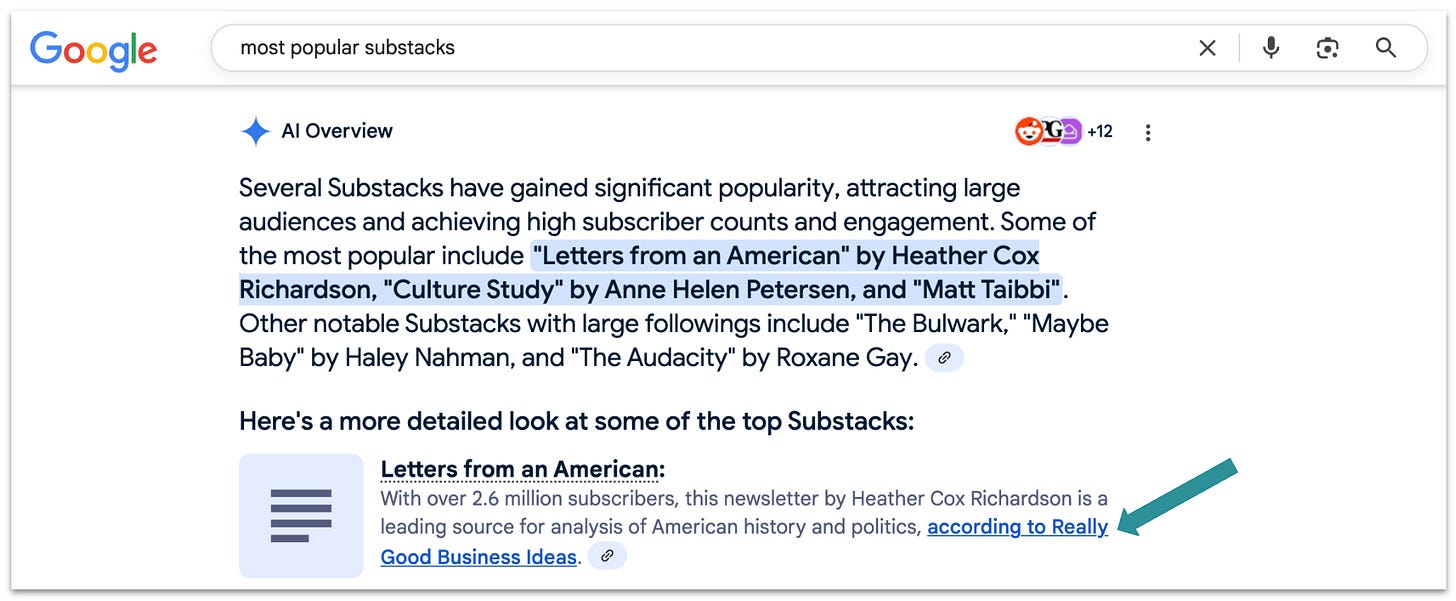
Visibility From LLMs Is Up 📈
But there is some good news: a new kind of search visibility is growing fast, and it rewards clarity, authority, and depth.
It’s a massive change in how search works. Fewer visitors are landing on websites, but the sources being cited are gaining visibility, authority, and long-term brand recognition.
Large language models (LLMs), like ChatGPT, Claude, and Perplexity, are reshaping how people search and how brands are discovered online. Rather than typing questions into Google, many people searche by asking LLMs instead.
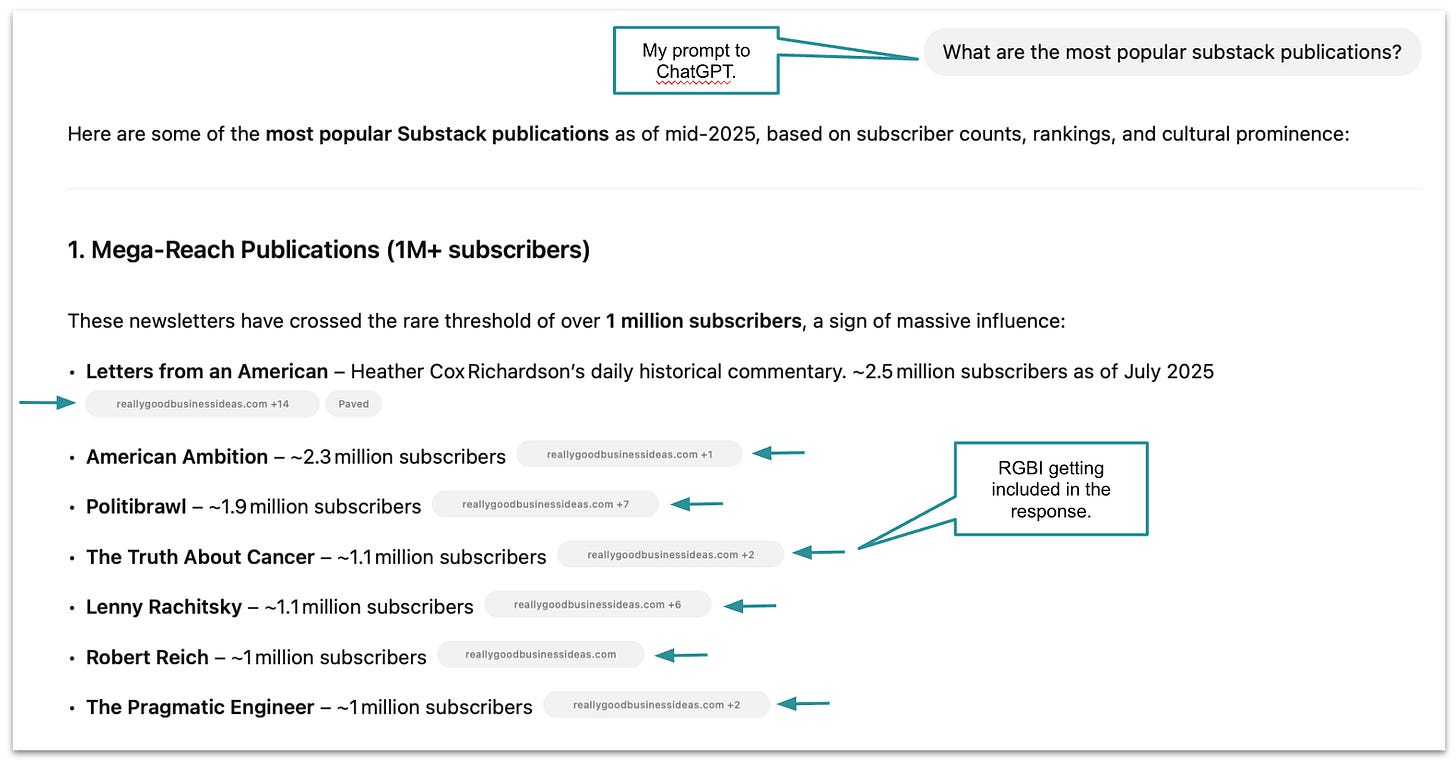
Data shared in a recent issue of
’s shows just how big this change is:Over the last 12 months, ChatGPT’s US referral traffic to websites jumped by +3,496% (UK: +5,950%), from 14 to 516 million (after cleaning up referrals to Openai.com, which are mostly authentications).
In comparison, Google’s outgoing referral visits grew only +23% in the US and 19% in the UK.
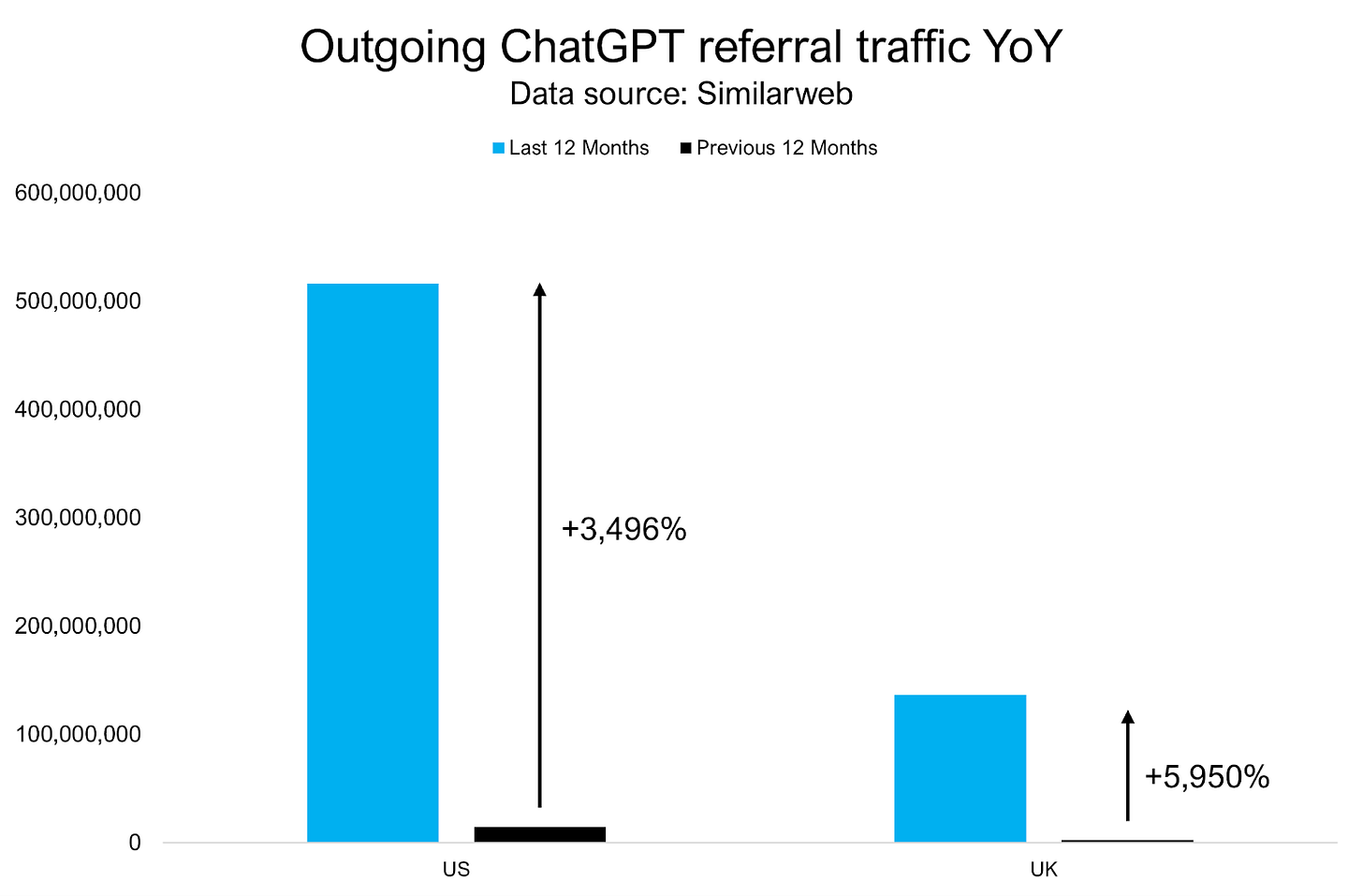
This represents a massive increase in a short period, but ChatGPT still only receives a fraction of Google’s visits (a mere 3.4%), despite being the most popular chatbot.
We’re likely still at the very beginning of this shift. A recent SemRush study predicts that referral traffic from LLMs will continue to grow, surpassing referral traffic from traditional search by 2028.2
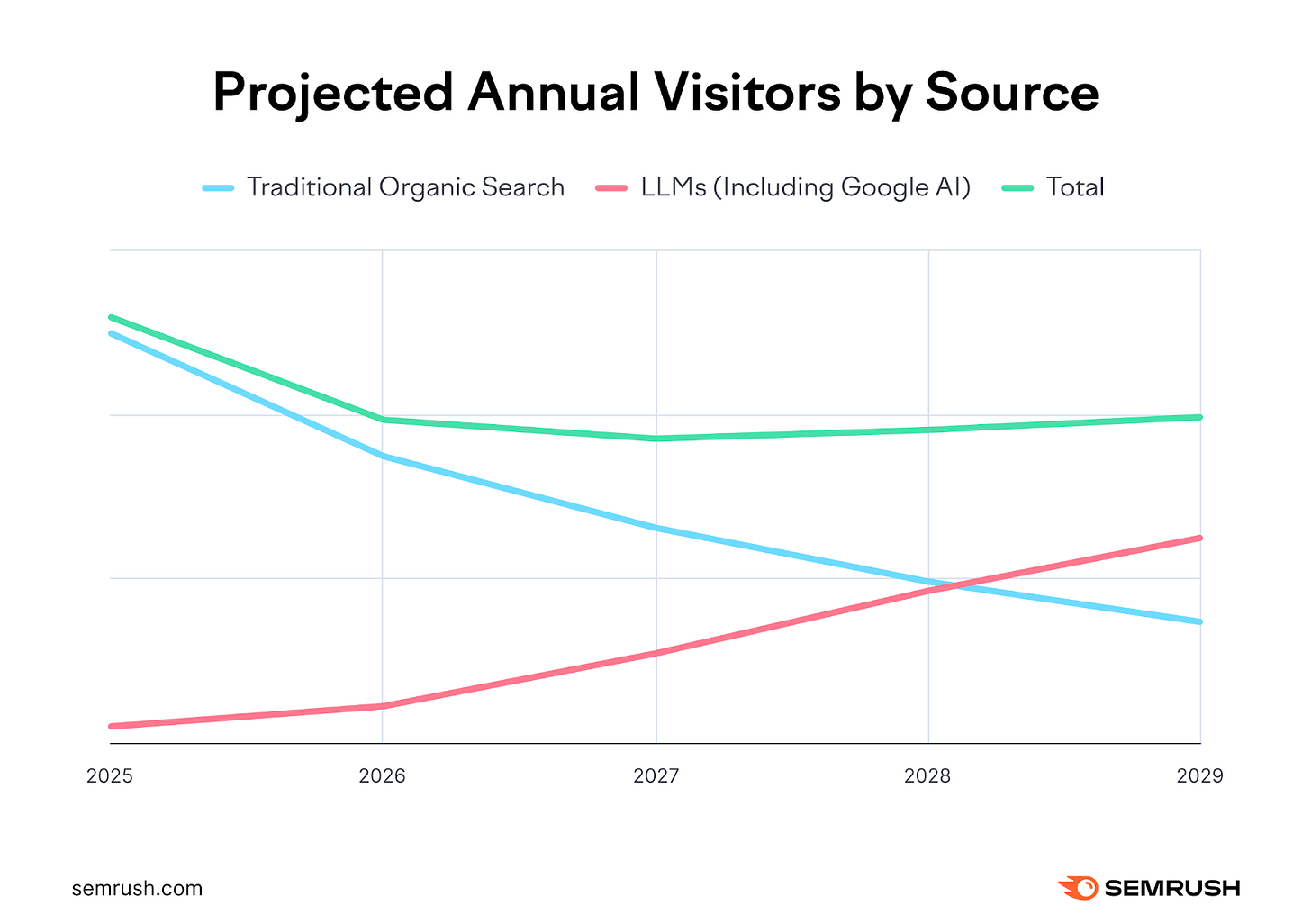
This means you can still get in early and tap into the first-mover advantage.
Why LLM Traffic Is Different
This shift isn’t just about more traffic, it’s about better traffic.
LLMs don’t work like traditional search engines. They don’t rank results or serve up a list of links. They generate answers, pulling directly from trusted sources to craft a response.
If your content gets cited, it doesn’t just appear on page one; it becomes part of the answer itself, front and center, with credibility built in.
That’s why referral traffic from LLMs isn’t just growing, it’s also becoming more valuable.
On average, a visitor from ChatGPT is 4.4× more likely to convert than one from Google. And when you look at traffic value, LLMs are expected to surpass Google even faster, before 2027.3
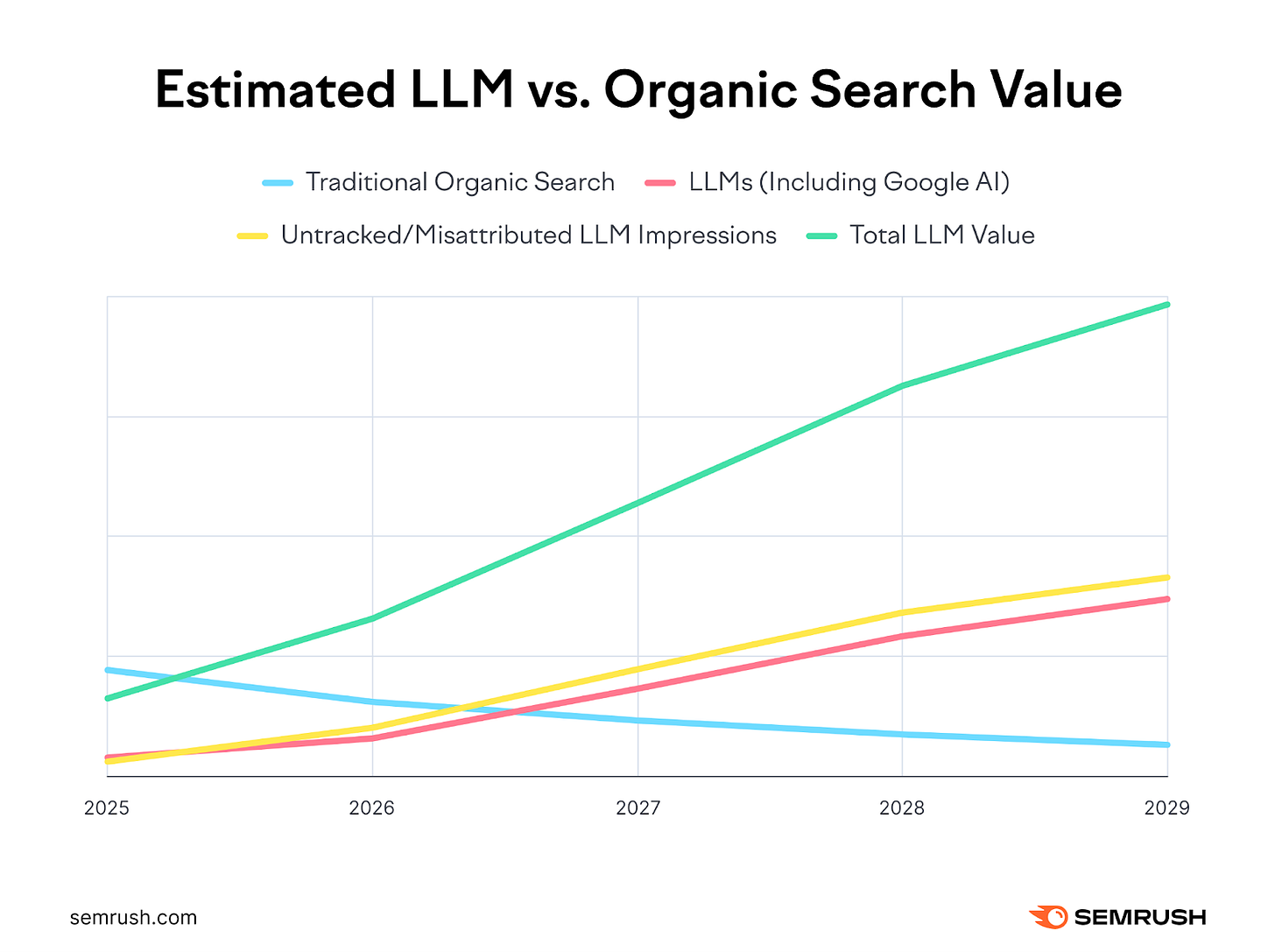
Now is the time to start focusing on this new marketing channel: generative engine optimization (GEO).
What Is Generative Engine Optimization?
Generative Engine Optimization (GEO) is the practice of making your content discoverable, quotable, and trusted by AI systems like ChatGPT, Perplexity, and Google’s AI Overviews, so it gets cited directly in their answers, even when there’s no traditional click.
The shift is already underway. Today, I’ll show you how to get ahead of it and start capturing the next wave of high-intent discovery traffic.
How Do LLMs Process Information?
Unlike traditional search engines that crawl the web and rank pages based on keywords and backlinks, large language models (LLMs) like ChatGPT, Claude, and Perplexity don’t “search” in the conventional sense. Instead, they generate answers by predicting the most likely next words based on a vast internal representation of language, facts, and relationships.
Here’s a high-level breakdown of how it works:
Training: LLMs are trained on massive datasets that include books, websites, forums, and other public text. This gives them a broad understanding of how humans communicate and which sources are credible, informative, or frequently referenced.
Retrieval: Some tools, like Perplexity or ChatGPT with browsing enabled, include retrieval mechanisms that fetch fresh information from the web. These tools often rank or summarize results from trusted sources in real time.
Generation: When a user asks a question, the model either pulls from its internal training or combines that with retrieved sources to generate a natural-language response. The goal isn’t to show a list of links, it’s to synthesize an answer.
Attribution: If the model uses retrieval, it may cite sources directly in the response. These citations often come from high-authority, clearly-written pages that directly address the user’s intent.
The takeaway? LLMs reward content that’s clear, credible, and quotable. If you want to show up in their answers, your content needs to make it easy for the model to understand what you’re saying and trust that it’s worth repeating.
How Do LLMs Choose Which Content to Cite?
When someone asks a question using ChatGPT or Perplexity, the model doesn’t just grab the top result from Google. It selects and synthesizes content based on what it understands to be clear, trustworthy, and relevant.
That means the rules for getting cited are different from traditional SEO.
You’re not trying to rank, you’re trying to be understood and trusted by a machine trained to mimic human reasoning.
So how do you make your content citation-worthy in this new landscape?
Here are the core factors that LLMs use to decide what to quote and what to ignore.
1. Authority and Trust Signals
LLMs are trained to recognize patterns of credibility, so they tend to prefer sources that appear authoritative.
Well-established domains (e.g. .gov, .edu, major publishers).
Sites that are frequently linked to or referenced across the web.
Content that’s been cited in other high-trust sources or public datasets.
💡 Why It Matters: If your brand has a strong domain reputation or is consistently linked to by others, it’s more likely to be cited, even if it’s not the top result on Google search.
2. Clear Structure and Direct Answers
LLMs prioritize content that is explicit, structured, and easy to quote.
Clear, concise headlines and subheadings.
Content that directly answers a specific question.
Paragraphs that summarize key ideas in standalone form.
💡 Why It Matters: LLMs need to extract meaning quickly. If your content is too vague, buried in fluff, or requires too much interpretation, it’s less likely to be cited.
3. Semantic Relevance to the Query
Even high-quality content won’t be cited unless it’s topically relevant to the user’s query.
Use of natural language that aligns with how people ask questions.
Coverage of niche or long-tail topics that few others address.
Strong topical focus, not just keyword stuffing.
💡 Why It Matters: LLMs don’t just look for keywords, they look for meaning. The more your content aligns with the intent of a question, the more likely it is to surface.
4. Formatting for Machine Readability
Structured data and clean formatting make content easier to process and quote.
Use of lists, bullet points, tables, FAQs, and headings.
Semantic HTML (like <article>, <h1>, <section>).
No clutter, overlays, or AI blockers that hinder parsing.
💡 Why It Matters: LLMs can “read” messy content, but they perform better with structure. The easier you make it to extract meaning, the more likely your content becomes the cited source.
How to Get Started With Generative Engine Optimization
You don’t need to overhaul your entire content strategy to benefit from generative engine optimization; you just need to make your content easier for AI systems to find, understand, and cite.
The good news? You’re probably already doing some of it.
The better news? With a few small shifts in how you structure, publish, and distribute your content, you can start showing up inside AI-generated answers—not just buried beneath them in Google.
Here’s how to make that happen.
1. Create Standalone, Quotable Passages
LLMs love clear, self-contained answers they can drop directly into a response.
Start sections with a clear definition or summary.
Use headings or bold text to break up content.
Include 1–2 sentence “answer blocks” that can stand alone.
2. Cover Specific, Intent-Rich Questions
Don’t just write general blog posts. Target questions people actually ask, especially niche or long-tail ones that haven’t been saturated in traditional search.
Use tools like AlsoAsked, AnswerThePublic, and your own interactions to identify real user queries.
Include an FAQ section with common questions and crisp answers.
Format your answers to be short, direct, and clear.
3. Signal Topical Authority
LLMs are more likely to cite domains that “own” a topic.
Publish a series of related posts to create topical depth.
Internally link between them to create a semantic cluster.
Reference authoritative external sources (which can boost your credibility via co-citation).
4. Clean Up Your Technical Structure
Machine readability matters. LLMs may not “crawl” pages like Googlebot, but structured HTML still improves parsing.
Use XML sitemaps and make sure your site is not blocking AI crawlers in robots.txt
Use semantic tags (<p>, <b>, <h1>, <ol>, etc.).
Ensure fast load times and mobile responsiveness.
5. Grow Your Brand Mentions
LLMs look for patterns across the web, not just on your site. The more your brand or content is mentioned on trusted third-party pages, the more likely it is to be seen as a reliable source.
Pitch quotable insights to bloggers, journalists, and newsletters to increase your chances of being referenced in trusted third-party content.
Get listed in roundups, directories, and “best of” posts that LLMs recognize as structured, reputable sources.
Answer questions on public platforms like Reddit, Quora, and LinkedIn to build brand authority.
Unlike SEO, GEO isn’t about beating 1,000 competitors for a single search engine results page. It’s about earning trust from the AI itself so your content gets quoted inside the answer, not buried below it.
And the best part? Most of your competitors aren’t even thinking about this yet.
I’ll be sharing proven tactics, top tools, and battle-tested workflows to help you adopt GEO in the coming weeks. Subscribe now so you don’t miss out.
To endless possibilities,
Casandra



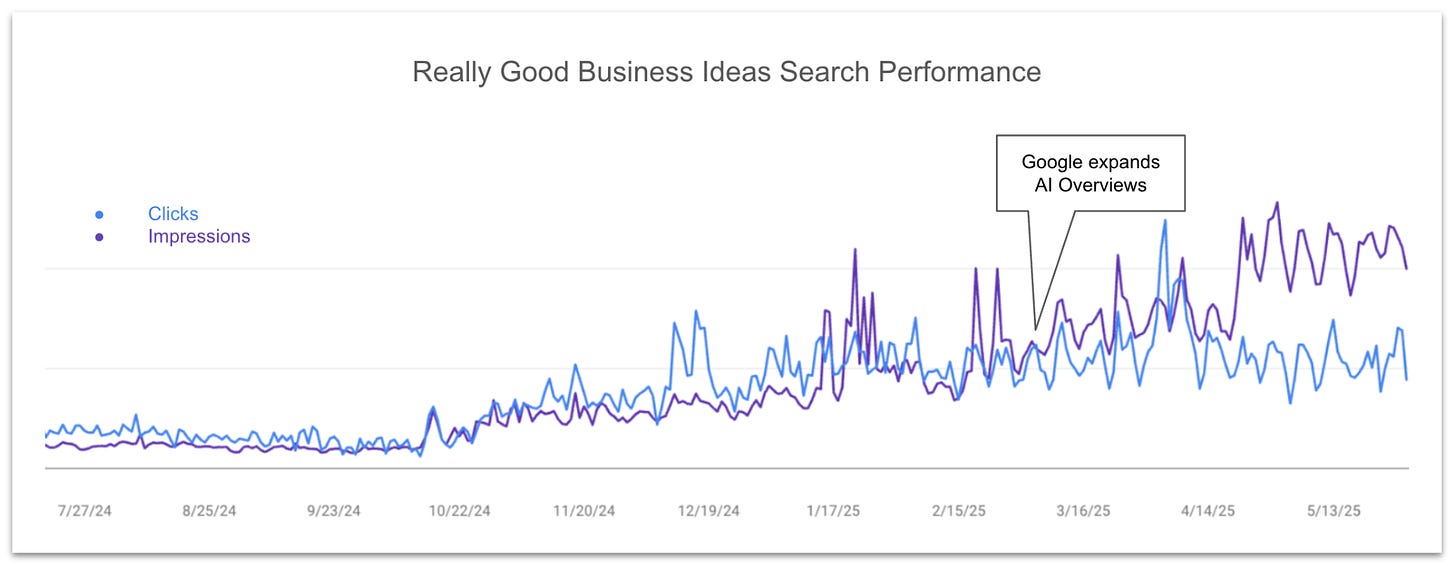
This was one of the most detailed but easy to understand articles on this topic. Great work, Casandra. This is one I will absolutely be sharing with my clients.
This is just fascinating. Thank you so much for your insights here, so good.